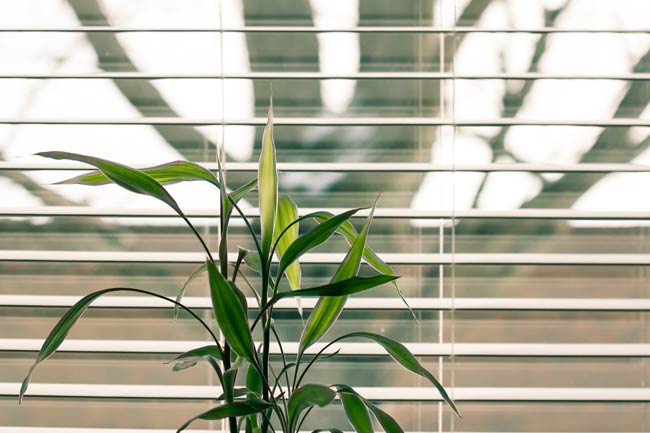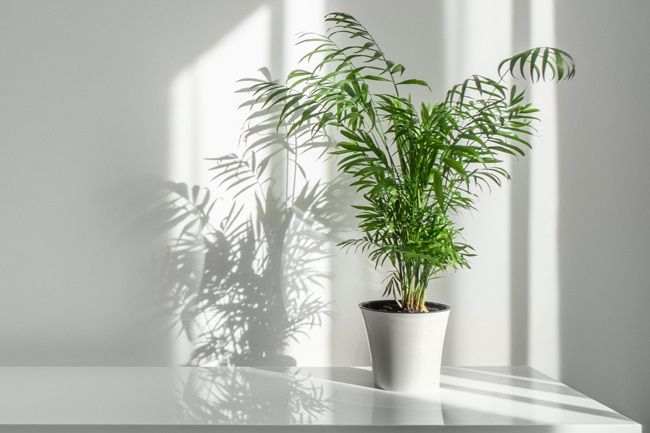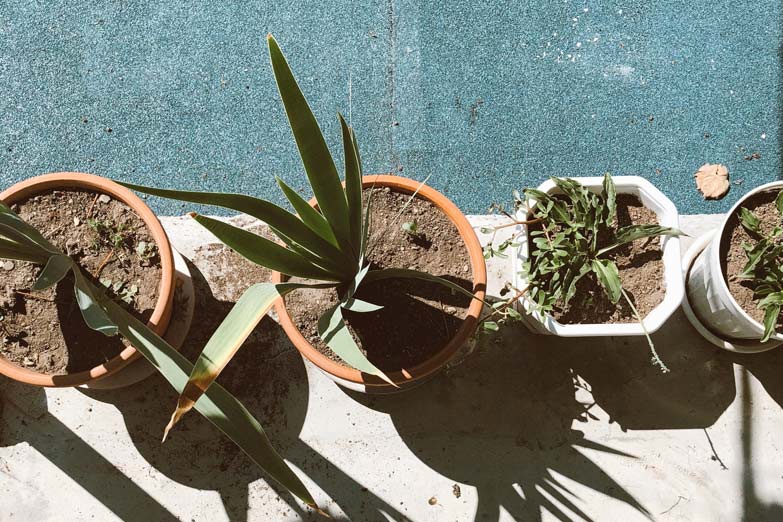It’s a question you may have wondered – can plants get too much light? It can be difficult to know just how much is too much, especially when every plant is different!
Can plants get too much light? Yes, there are two ways plants can get too much light. Firstly, light that is too intense can damage your plants. Secondly, excess light duration can affect the growth cycle and blooming of many plants. Limits of light intensity and duration varies between plant species.
Read on to dive deeper into this subject. I’ll outline why is it harmful for plants to have too much light as well as how to identify the problem and choose the ideal light for your plants in the first place. First, though, let’s look at why it is so harmful to plants to be overexposed to light.
What Happens When Plants Are Exposed To Too Much Light?
There are two things to consider here: light duration and light intensity.
Light duration refers to the number of hours of light a plant receives each day while intensity is the quantity of light per unit area, usually measured in Lux or foot candles.
Each of these is a different concept and affects a plant’s growth in different ways. Generally speaking, light intensity is what you need to be careful about. Let’s take a closer look.
Light Duration
For the most part, plants can be exposed to light for an indefinite amount of time and still continue to grow.
However, being exposed to light for too long can affect a plant’s growth cycle and ability to bloom but this differs based on the type of plant. Interestingly, plants actually grow faster at night due to important metabolic processes that happen at night.
Some plants cannot trigger important phases of growth or bloom without appropriate levels of darkness per day. These plants exhibit photoperiodism.
Plants such as Poinsettias, Kalanchoe and Christmas Cacti require long periods of darkness for many weeks to trigger blooming and are known as “short-day plants”. Many herbs and vegetables require short nights to trigger flowering and are known as “long-day plants”.
Overall, plant growth cycles tend to be impacted by the duration of light, but the plants are not harmed.

Light Intensity
Light intensity is what causes most of the negative effects associated with a plant getting too much light.
When a plant is exposed to high intensity light, some of this light energy is converted to heat. Your plant must take steps to dissipate this heat energy, which normally involves using some of its available water to cool itself off.
Over time, this can deplete the plant’s water reserves and leave insufficient water for vital processes such as photosynthesis. If the plant’s capacity to dissipate heat is depleted, or if the amount of heat generated exceeds the plant’s ability to dissipate it, the plant will suffer heat damage. This often presents as yellow or brown spots on the foliage, generally yellow leaves, brown crispy leaf edges or tips, or curled, dropping leaves.
Light intensity might also dry out the soil from which the plant draws moisture, leading to accelerated plant dehydration. It can harm a plant in a variety of ways and different plants have a different tolerance level to light intensity.
How Do You Know If Your Plant Is Getting Too Much Light?
It can be difficult knowing how much light your plant truly needs. From direct light to indirect light to low light, different plant species have different requirements. Next, I’m going to talk about how to tell if your plant is getting more light than it needs.
As mentioned, a plant that gets too much intense light will start to show signs of damage. Spotting these early signs is important, as it will enable you to adjust the positioning of your plant to reduce lighting, and remedy the problem before your plant’s health is significantly affected.
Signs your plant may be getting too much light;
- Brown leaf edges or tips
- Brown, dry patches on the leaves
- Leaves turn pale or yellow, particularly those most exposed to the light
- Yellowing may be noticeable in the leaf tips first
- Leaf yellowing may not affect the leaf veins initially
- Wilting, particularly of younger foliage
Can Indoor Plants Get Too Much Light?
Although it is less common for indoor plants to get too much light, it can, of course, happen.
Plants can receive direct sunlight by being right beside a window which can be too much light for some plants. Whilst light through a window can be up to 50% less intense than direct sunlight outside, it can still be too intense for many indoor plants.
For example, plants such as ivies and ferns thrive in indirect light and they can be damaged if placed directly beside a window – particularly a south-facing window, where they receive full sun. This effect is even greater for plants that thrive in low light.
If you are growing indoors, the solution is often as simple as moving your plant to a more appropriate area. Check out these articles which suggest good indoor plants for bright light, low light and moderate light.
Can Too Much Light Kill A Plant?
To put it bluntly, yes, too much light can eventually kill your plant. The light intensity can produces increasingly severe damage to your plant to the point where it dies. It can also dry out the plant to the point where it no longer has the water it needs for growth and photosynthesis.
While the simple answer is yes, plants are quite resilient. See here for the science behind the protective mechanisms plants have to reduce damage from excess light. If you think your plant may be dying, try moving it into more appropriate light and trimming the damaged parts. You might be surprised at how well it can recover.
Do Plants Grow Faster With 24 Hours Of Light?
In terms of whether plants grow faster under constant light, it depends on the plant but, usually the answer is no. Whilst your plant will have more light available to continue photosynthesis, this simply gathers energy from the sun and stores it as carbohydrates within the plant. To utilize this energy and grow to its maximum potential, most plants will benefit from a period of darkness each day.
This is not the intuitive answer, so if you’d like to know more about why plants grow faster with a period of darkness each day, read this article.
As an important note, the 24-hour light may affect a plant’s ability to bloom. Certain plants, such as those that are photosensitive, need darkness to bloom. Examples include Kalanchoe, poinsettias, and certain cacti.

Can LED Lights Burn Plants?
The short answer is yes, but it depends on the intensity of the light energy delivered to the plant, and the heat emitted from the LED light.
You should be very careful to place LED grow lights an appropriate distance from the plants you are growing. This will vary significantly depending on the lights you are using and the plants you are growing. See this article for more information about LED grow lights and how they compare to fluorescent grow lights.
You also need to be careful to choose specific grow lights for plants, rather than just using standard LED bulbs. The light from normal LED bulbs looks perfect for humans, but the wavelengths of light emitted are often largely useless for plant growth. This can result in a plant receiving lots of light energy which it cannot use, and this will greatly impact growth.
Plants can only utilize light energy at specific wavelengths, and this is different from the spectrum of visible light. Plants absorb photosynthetically active radiation in the visible, infrared and ultraviolet parts of the spectrum. Choosing specific LED grow lights ensures that light being shone on your plants can be used to help them grow and reduces the risk of burning.
In addition to light, heat from grow lights can also burn plants. The heat emitted from LED lights is quite low compared to fluorescent, incandescent, and HID.
This makes LED lights a more efficient option and reduces the risk of burning your plants. It does still depends on how resistant the specific plant is to heat and light intensity.
Conclusion
As you can see, the answer is yes, plants can get too much light. However, by observing the lighting and your plants, you will be able to adjust their position to optimize their growth.
The biggest thing to keep in mind is the light requirements of the plants you are trying to grow. Typically, they are clearly marked as to whether they require direct light, indirect light, or low light.
If you keep the principles of this article in mind, I’m confident you’ll find the ideal light for your plants.

